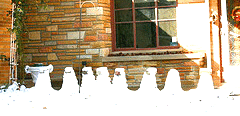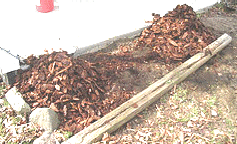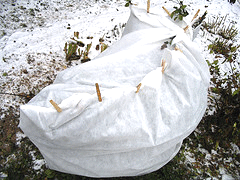Protect your Roses in Winter
Rose gardeners in cold regions have developed a number of ingenious ideas for protecting their rose bushes through winter. It is important to understand what to protect them from to determine the best method.
Until the ground freezes, make sure to continue to water your rose bushes with a soaker hose or slow trickle from the garden hose. Prune lightly, removing only the spindly new top growth to prevent snow and ice from breaking them. Thoroughly clean up all leaves and plant debris from the ground to minimize disease growth. Spray the roses stems and the ground with fungicide to reduce the possibility of fungus being harbored over winter.
Some rose bushes can be seriously damaged if the ground surrounding the roots are frozen. Hardy rose bushes can be damaged or killed if a cycle of freezing and thawing heaves the root ball up from the soil, so the objective is to keep the rose dormant by keeping the root temperature fairly constant - in other words keeping it frozen! Different varieties require different methods of protection in different climate zones. Make sure you protect your rose bushes with the appropriate method. DO NOT PUT PROTECTION IN PLACE UNTIL JUST BEFORE THE GROUND IS EXPECTED TO FREEZE HARD. AND DO NOT REMOVE UNTIL THE EARLIEST SPRING BLOOMERS HAVE BLOOMED (in many parts of the country those are forsythia shrubs).
Minimal Protection: Mulch heavily, 3-4 inches deep. For added protection, pile leaves or evergreen boughs in the canes (perhaps in a “tomato cage” to hold them). This will protect the canes from winter wind and bright winter sun, which can scald bare limbs
**Somewhere between minimal and moderate, leaning perhaps toward moderate, falls a protection that is less used than it used to be, the old white styrofoam rose cones. The rose canes need to be tied together to fit in the cone, and the cone then weighted down so it doesn’t blow away. There is usually a hole in the top for ventilation, however it can still heat up too much inside on sunny winter days. Added ventilation holes will eliminate the problem. It is a very unattractive method that has been replaced by wire collars, similar to the above mentioned “tomato cage”. However the rose collars are less open with more of a wire screen to hold mulch or compost more securely. These collars can be used with the minimal or moderate methods of protection.
Moderate Protection: Mound soil up around the canes of the rose bush about 6 to 10 inches deep. Add mulch to the top, and leaves or evergreen boughs in the canes as described above. The rose bushes here were pruned down after the first freeze so the entire shrub can be protected by the mulch on top of the mounded soil.
This is one of many creative ideas by northern gardeners. These rose bushes have soil mounded deep at the base to protect the roots. Then this porous fabric (this is probably row cover fabric,burlap works to) was wrapped around the roses. The “container” was filled with leaves and secured at the top. This method would be excellent for some of the hardier roses in zones 3 and 4 instead of the Minnesota Tip.
Maximum Protection: The Minnesota Tip method of protecting rose bushes from extreme cold. This method is usually used for hybrid tea roses grown in zones 5 and north, as well as more tender grandifloras. Dig a trench beginning at the base of the bush, and extending out from the base slightly further than the height of the plant. (The trench should surround the root ball, but not expose the roots.) Gently pulling the branches in toward the center, tie the bush up beginning at the base, winding twine around the rose bush to hold the branches together. Now tip the tied up bush into the trench, leaving the roots in place. Cover the entire bush with the soil you removed, then cover with leaves or bags of leaves over the entire area.
The next page demonstrates simple steps for protecting your roses. Also be sure to see information for winter protecting your rose standards and container roses.
Don’t get scared off yet! I have grown several varieties of roses in the frigid north. So far I have never “Minnesota Tipped” any, nor have I encountered any devastating disease or fungi. I have simply selected the “right” rose bushes, and devoted minimal proper care. So read on!!...and you will be able to do the same.
Next Page Specific Instructions to Protect Hardy Roses in Winter



